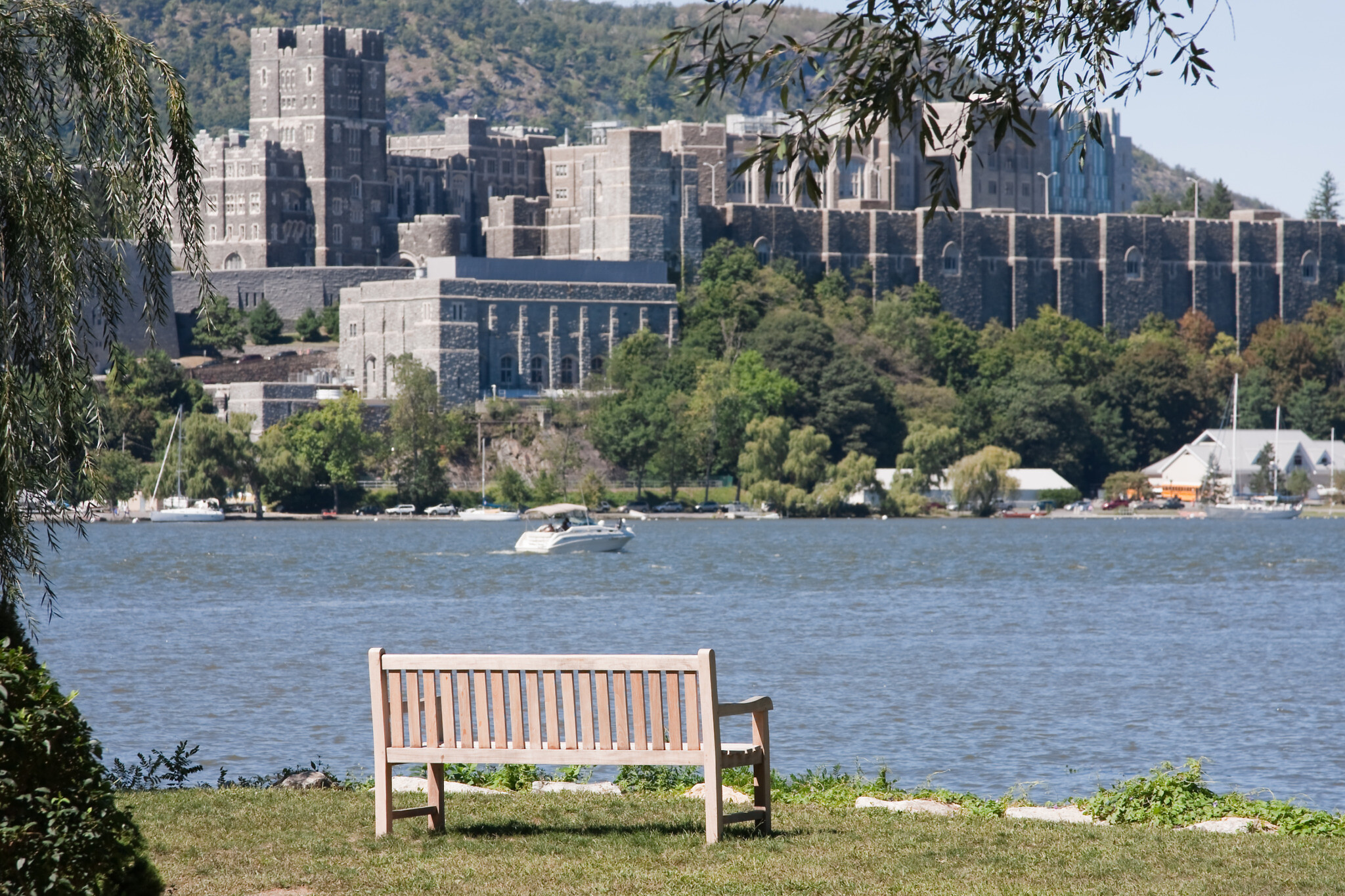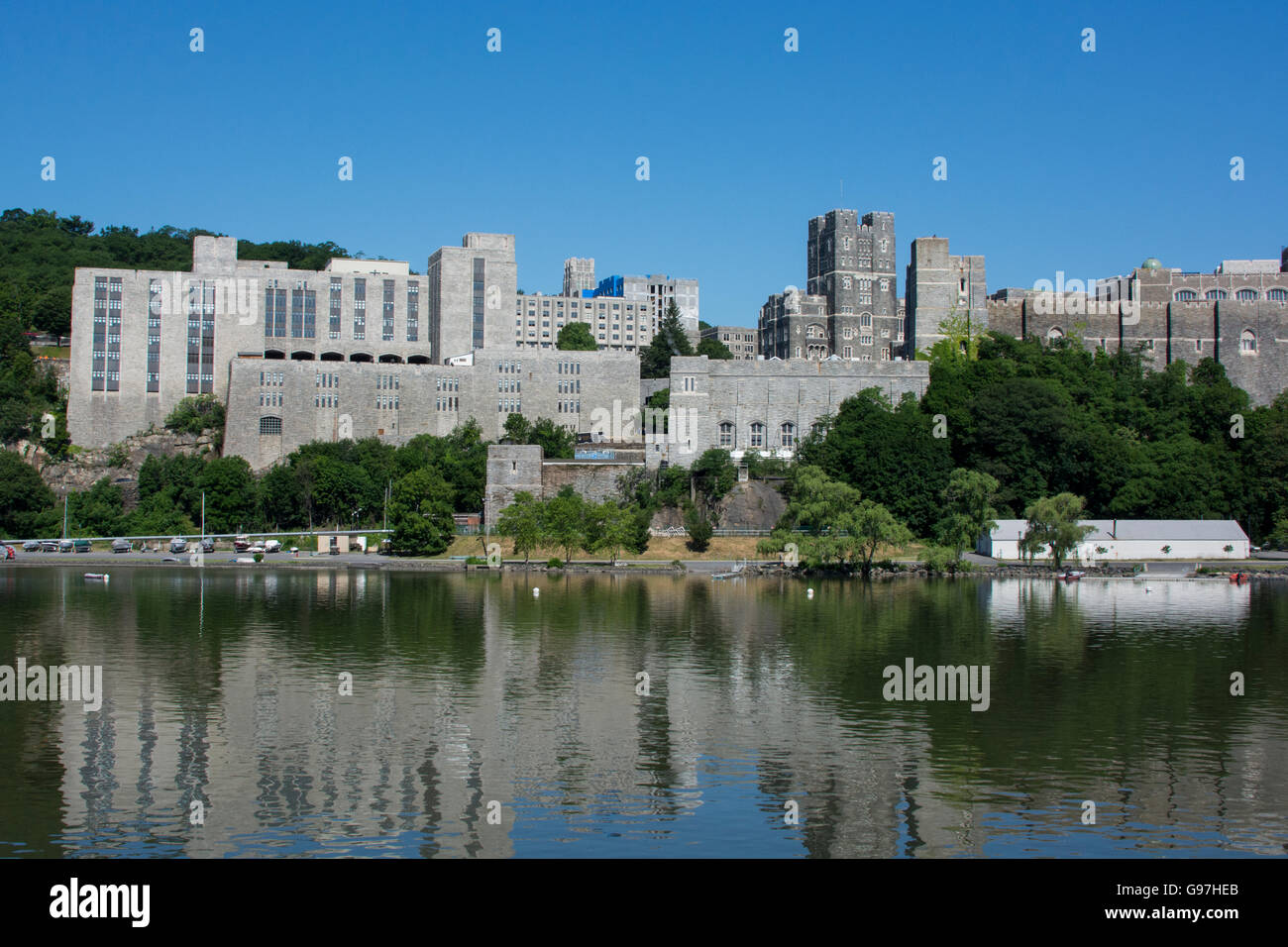Hudson River West Point - Mobilizing an army in Revolutionary America was a difficult task; Roads, where they existed, were little more than wagon tracks and the terrain was poor. Both armies used water as a means of transportation. British supremacy at sea shifted the struggle for transport through the colonies to rivers and waterways. Rivers such as the Savannah, Dan, York, Delaware, Mohawk and Hudson were strategically important. However, the Hudson proved to be one of the most important rivers of the war.
Find Hudson on the map and it will become clear why it is so important. Formed by Lake Champlain, Lake George and the Hudson, the highway connected Montreal, British Canada, to New York. Soldiers traveling this route will have to travel overland at two key locations. Two forts protected these points during the French and Indian War. Fort Ticonderoga guarded the harbor between Lakes Chaplin and George, and Fort Edward commanded the upper Hudson. Another fort, Stanwix, protected the western approach along the Mohawk River. These fortifications combined to protect Albany, one of the oldest cities in the colonies, from attacks from the north and west.
Hudson River West Point

In June 1777, a British column led by General John Burgoyne marched south from Quebec with the intention of capturing Albany and securing the Hudson. British control of the Hudson would cut off the New England colonies, considered the most rebellious of the thirteen, from their rivals; A strategy that the British thought would end the war. Key to this strategy was another column led by General William Howe that moved up the Hudson River from New York.
File:aerial View Of West Point And Hudson River 01 (9614200788).jpg
The vulnerability of the Lower Hudson had long worried General George Washington. In March 1776, three forts—Washington, Montgomery, Clinton, and Constitution—were built five miles below West Point. By mid-1777 the Montgomery and Clinton were completed and a large iron chain was strung across the river.
On October 6, 1777, about 2,000 British troops under Sir Henry Clinton attacked a garrison of 600 in Clinton and Montgomery. After a fierce battle, the defenders were crushed, 41 British soldiers were killed, 142 were wounded, 75 Americans were killed or wounded, and 263 were captured. Both forts were destroyed when the British retreated. Sir Henry Clinton's attack on Clinton and Montgomery was designed as a diversionary attack to draw troops from General Gates' army against Burgoyne at Saratoga. However, this small force was not the army that Howe had promised. Instead, Howe went to Philadelphia; Burgoyne was left to his fate at Saratoga.
After the resounding American victory at Saratoga, the Hudson Valley returned to American control and the British turned their attention to the southern colonies. The defense of the Hudson still worried Washington, who was planning a new fort over the old one; On the narrow "S" bend of the river: West Point. The bend in the river was notoriously difficult to navigate, forcing ships to touch, with strong currents and often adverse winds. Washington entrusted the leadership of his best engineer, the young Polish colonel Tadeusz Kosciuszko.
Fort West Point was a series of forts located on the west coast of Hudson Island and Constitution Island. The river was spanned between these two places by a Great Chain, each link two feet long and weighing 114 pounds, with a total length of 600 yards of river and a weight of 65 tons. A log boom helped keep the chain afloat, and the narrow winding river prevented any vessels from passing through the chain forts.
Hudson River From West Point\
Forts On the heights of the west coast stands Fort Arnold, the largest of West Point. The fort provided the firepower to sink any vessel that attempted to cross the chain. Fort Arnold had stone walls with earthworks, housed a garrison of 700 soldiers, and mounted one 24-pounder, six 18-pounders, one 12-pounder, one 4-pounder, three 3-pounders, and eleven mortars. Inside the fortress were two barracks, a powder room and bomb magazines. Fort Arnold was defended by Fort Putnam, which consisted of three interior casemates, two bomb shelters and a supply magazine. The garrison could consist of up to 420 men stationed in tents outside the fort and armament included five 18-pounders, two 12-pounders, two 6-pounders, one 4-pounder and four 5.5-inch mortars. Arnold's and Putnam's combined forts were designed to withstand a ten-day siege.
Across the river on Constitution Island was Fort Constitution, originally begun in 1776 and only partially completed, with effort and materials diverted to Forts Montgomery and Clinton. Fort Constitution was also captured and destroyed by the British in October 1777 when Montgomery and Clinton fell. In 1778, the fort was partially rebuilt to protect the eastern end of the Great Chain. These main fortifications were supported by a series of additional batteries and redoubts; All were designed to provide covering fire for the forts or the river.
In 1780, Kosciuszko completed the siege of Fort West Point, and its commander, Benedict Arnold, took command on August 3, 1780. Although Fort West Point never fired a shot in anger, it witnessed the greatest betrayal in American history. When his leadership at Saratoga was ignored, Arnold became dissatisfied with Operation Patriot and began to question his role in it.

Before commanding West Point, Arnold provided intelligence to the British. While at West Point, he actively sought to weaken the fort in hopes of surrendering to the British. Fortunately, Major John Andre discovered Arnold's treachery when he was captured, and Arnold escaped to a British warship.
Hudson River West Point New York Usa In 1880s Stock Photo
On July 4, 1802, Fortress West Point ended its defenses on the Hudson and officially became the United States Military Academy. Since 1802, the Long Gray Line has steadily moved away from its bluffs, ensuring that not only the Hudson, but the nation and the world are firmly protected. Now above the silent walls of earth and stone the creed is heard: Duty, honor, country.
Hudson river dinner cruises, west point hudson, dinner boat hudson river, hudson river sunset cruise, hudson river boat tours west point, hudson river tours nyc, hudson river cruise west point, hudson river cruise to west point, hudson river museum, hudson point, hudson river cruise nyc to west point, hudson river cruise nyc
0 Comments